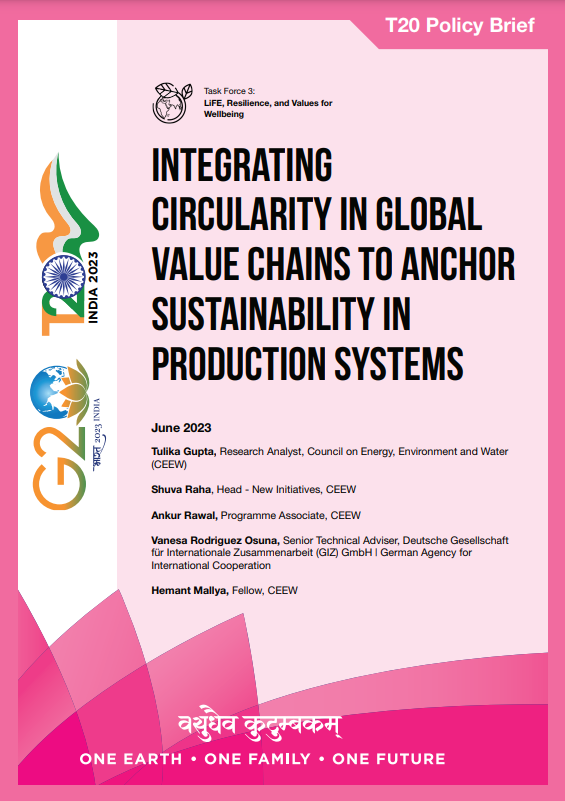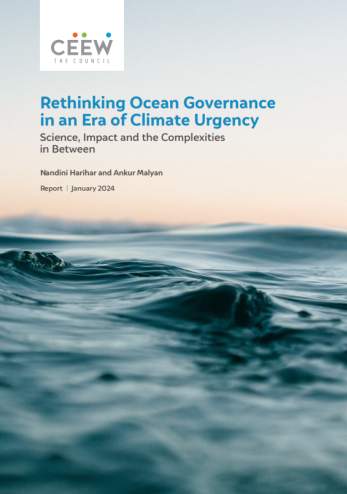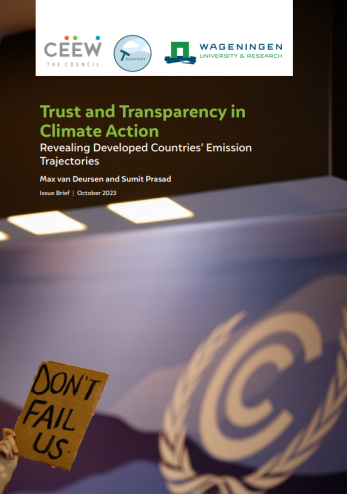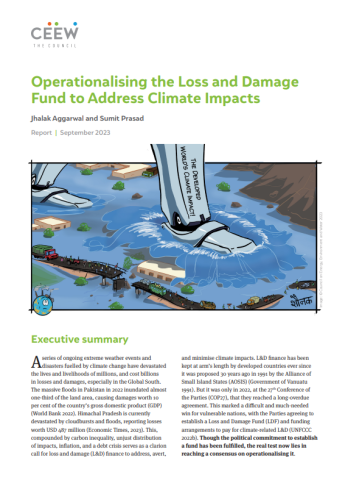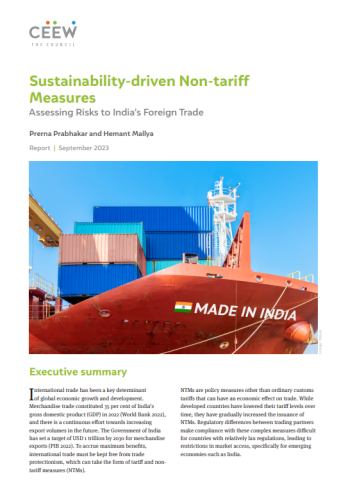Policy Brief
Integrating Circularity in Global Value Chains to Anchor Sustainability in Production Systems
Tulika Gupta, Shuva Raha, Ankur Rawal, Vanesa Rodriguez Osuna and Hemant Mallya
June 2023 | International Cooperation
Suggested citation: Gupta, Tulika, Shuva Raha, Ankur Rawal, Vanesa Rodriguez Osuna, and Hemant Mallya. 2023. Integrating Circularity in Global Value Chains to Anchor Sustainability in Production Systems. T20 Policy Brief.
Overview
Integrating circularity in product value chains needs a fundamental shift in how products are conceived and managed by designers, producers, consumers and policymakers. This Policy Brief uses a common appliance—the refrigerator—to explore the steps needed to embed circularity in global value chains (GVCs). It explores how G20 countries can drive industrial and governance collaboration to embed circularity in GVCs to improve resource efficiency and promote sustainable production and consumption.
Key Highlights
- The linear economy depletes the earth’s finite materials and emits a large share of the global greenhouse gas (GHG) emissions. The volume of extraction and materials use over the past six years is almost as much as the entire twentieth century. A rapid transformation into a low-carbon, circular economy (CE), with sustainable production and consumption patterns is thus a multilateral imperative.
- About two-thirds of cross border trade uses GVCs, which are lengthy and complex, covering multiple jurisdictions, and are influenced by factors such as policies and regulations; innovation and technology; design, standards and specifications; and economics, markets, competition and trading mechanisms.
- Integrating circularity in global value chains (GVCs) requires reimagined product design; sustainable extraction, processing and production of input materials; access to clean energy and low-carbon transport systems; after-sales services for maintenance, refurbishment and repair; coordinated end-of-life handling; and producer and consumer incentives to increase uptake.
- The active buy-in of G20 economies – which drive 80 percent of the global trade – is critical to embedding circularity in GVCs. This Policy Brief explores how G20 countries can drive industrial and governance collaboration to embed circularity in GVCs to improve resource efficiency and promote sustainable production and consumption, thus lowering environmental footprints.
Recommendations
- A Resource Efficiency and Circular Economy Industry Platform (RECEIP) – proposed under India’s G20 Presidency – can connect producer and supplier companies, logistics operators, financiers, technology providers, and training and staffing agencies across the G20 to leverage its economic network and interlocked GVCs.
- The RECIP can collate industry-wide feedback on challenges to GVC transition and help leading G20 markets in specific sectors disseminate – and other markets prepare for – emerging designs, standards and specifications. The RECIP can be housed in the Business 20 (B20) Engagement Group to foster dialogue and exchange of knowledge between the G20 countries and their business sectors.
- The G20 Resource Efficiency Dialogue (RED) can also be utilised to annually convene key stakeholders, including guest countries and industry experts (via the B20), to integrate political, economic and industrial discussions on the transition from linear to circular GVCs. G20 RED discussions on best practices, principles and protocols can help individual countries develop their own mechanisms and priorities.
"Industrial innovation, investment and agility must be supported by timely, coherent and consensus-led policies and fair regulations to drive producer and consumer shifts towards circular Global Value Chains."




